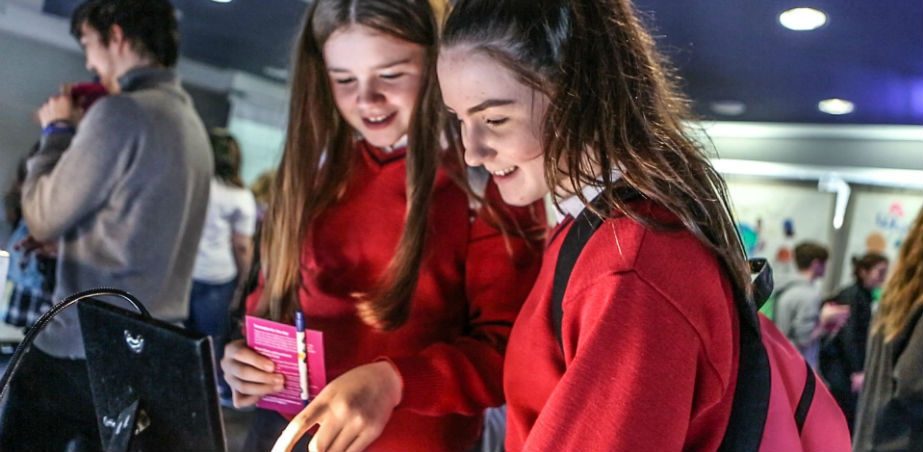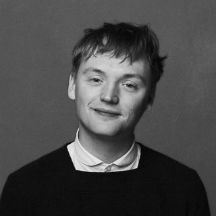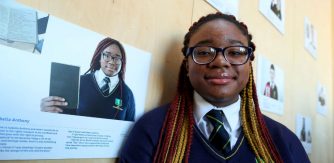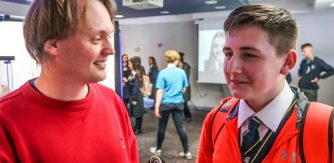Blog 2 – Dan Colley, Dramaturg & Director of Collapsing Horse Theatre

Students from Larkin Community College

Dan Colley is a director, dramaturg and programmer from Dublin. As Director of Collapsing Horse Theatre he has directed The Water Orchard (with Eoghan Quinn, co-produced by Project Arts Centre) The Aeneid, Bears in Space, Conor: at the end of the Universe, Human Child, Distance from the Event and Monster/Clock. With Collapsing Horse, Dan is Theatre Artist in Residence in Draíocht and co-Artistic Director of Kilkenny Cat Laughs Festival. As a dramaturg Dan has worked with Macnas, Dublin Fringe Festival, WillFredd and Sugarglass Theatre among others. Dan has a degree in English and Philosophy from NUI Galway and studied Youth Theatre Facilitation with Youth Theatre Ireland. Dan was a recipient of the Next Generation Bursary in 2016.
Blog post 2 -Rights Museum
The Rights Museum is a participatory art project that attempts to allow our objects do just that. Its subject is the lives of the second-year Art students in Larkin Community College and how the rights enshrined in the UNCRC intersect with their actual lived experience. Or don’t.
In the last post I described the beginnings of the project idea and the partners who came together to make in happen; Larkin Community College, The Ombudsman for Children’s Office and the National Museum of Ireland.
I began work on “Phase 1” of the project in September 2017 with two second-year Art classes, along with teachers Siobhán McKenzie and Declan Quinn. I facilitated four weekly hour-long workshops on Wednesday afternoons outside of class time. I also worked with the students in their art classes with their teachers.
The workshops used drama and storytelling techniques to three main aims; to surprise and entertain, to get them cooperating as a group, not just individuals; and to introduce new forms of self-expression. That work included a simple ball throwing and catching exercise (acknowledging the stress that it causes, allowing ourselves to drop the ball, and focussing on the thing that mattered; that we were all working together calmly to the get the ball around the circle). We also stood in a circle and played what I call “Kung Foo” (of which there’s many variations including “zip, zap, boing”) We also played a game in which 5 participants sit in a row, and then take turns standing up and saying “My name is X” followed by something that’s true. The aim is to always have someone standing and sating something, to act on the impulse to fill a gap where it occurs and to say anything that’s true, however mundane, that come into your head. This exercise allows for back-and-forth conversations to emerge, (eg. “My name is Dan and I have two brothers” followed by “My name is Stacy and I also have two brothers”) and for the participants to get to know each other better and have a way of expressing themselves through the exercise.
In two Art classes a week, I focussed more directly on the task of creating a Rights Museum. That time was devoted to introducing the concepts of the UNCRC (supported by a workshop delivered by the Ombudsman for Children’s Office) and a focus on objects and what story they can tell (supported by a “If Objects Can Talk” workshop in National Museum of Ireland).
The students were asked to pick an object that was meaningful to them and to bring it in to class.
They were asked to “free-write” about it.
They were asked to stand up and share why it was meaningful to them and what articles in the UNCRC it referred to.
This process lead the students to share among the following objects with their class:
- One student shared his grandad’s blue stone and mass card. It reminded him of special times shared with his grandfather who used to take him to football matches and tell him historical stories of his involvement in the IRA. This related to Article 31, right to access leisure, play and cultural activities.
- Another student shared a necklace that her mother gave her before she and her father moved to Ireland from Romania. Articles 9 and 10; family separation and reunification.
- Another student shared a photo of her and her grandmother when she was a small child. The photo was taken in Bangladesh before she moved to Ireland. Articles 9 and 10.
- Another student shared his dancing trophies. He’d won many dancing competitions and values his achievements as represented by the trophy. Relating to Article 31, acces to cultural activities.
- Another student shared his passport. His passport is from Poland and he recently had to go back to Poland to renew it. Article 7; right to a name and a nationality.
In their other session each week, Ms McKenzie’s class divided into 4 groups. Each group took a theme of the UNCRC and created a large mind-map illustrating that theme and the rights that it represented. Mr Quinn’s class also divided into 4 groups and created interactive paper fortune tellers which illustrated the four themes.
The culmination of phase 1 was a work-in-progress presentation of the Rights Museum took place in Croke Park as part of the OCO’s launch of the UNCRC25 celebrations in September 2017. It featured :
- Some the students objects presented in display cases and on plinth with their stories and the rights they relate to, handwritten and presented beside it.
- The mind maps were mounted on the walls.
- There was an installation of a bedroom with everyday objects from the children’s bedrooms, labelled with the rights they relate to.
- There was an interactive “writing wall” in which the visitors wrote what would be their Rights Museum.
- There was a slide show of some students photographed alongside their passports.
The participants reported their surprise and delight at how their objects and artwork were displayed just like in a professional museum. They also reported experiencing a thrill at seeing other people coming to view their objects and read their writing, and a great sense of achievement in what they’d produced.
The work-in-progress was intended to mark the end of phase 1 and the beginning of another, but we were soon to discover that it had the sense of an ending in and of itself. For phase 2 of the work, we would be starting again with a new set of students and finding a way to join the work that both groups had done.


